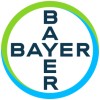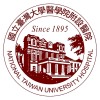
Trial of Chinese Herbal Medicine in the Treatment of Upper Respiratory Tract Infections (URTIs)...
Acute Upper Respiratory Tract InfectionsUpper respiratory tract infections (URTIs) are the most common illnesses in primary medical services but there is no established cure for these conditions in Western medicine. In Hong Kong, many patients use Chinese herbal medicine (CHM) for the treatment of URTIs but there is little research evidence on their effectiveness or side effects. The aim of this study is to test whether two commonly used Chinese herbal medicine (CHM) formulae guided by Traditional Chinese medicine (TCM) diagnosis will significantly increase recovery rate, and reduce the duration and/or severity of symptoms, and improve the quality of life of patients with URTIs in primary care. If a patient consents to take part in the study and is found eligible, he/she will be invited by the consulting doctor, and then be assessed by a registered Chinese medicine practitioner for whether the illness satisfies the TCM diagnosis of the two major TCM types of URTIs: Group A (Wind-cold syndrome) and Group B (Wind-heat syndrome). Subjects in Group A (Wind-cold syndrome) will be randomised to receive the Jing Fan Bai Du san or placebo. Subjects in Group B (Wind-heat syndrome) will be randomised to receive Ying Qiao san or placebo. Both group A and B treatments and placebo will be given in sachets of granules that are identical in appearance. Neither the Chinese medicine practitioner, the recruiting doctors, nor patient know whether a subject is taking CHM or placebo. 328 subjects (164 in each diagnosis group) will be recruited from patients consulting the Ap Lei Chau Government General Outpatient clinic for URTIs. Each subject is required to return to the clinic for follow-up assessment by the Chinese medicine practitioner on day 7 post-treatment and all subjects will be contacted by telephone on Day 2, 3, 5, 9, 11, 13,15 and 20 after treatment to assess their symptoms and to find out if they have developed any side effects or adverse reactions. The main outcome measure is any difference in the proportion of subjects who have resolution of the URTI on Day 7 between the treatment and placebo groups. The secondary outcome measures are the reduction in the duration and severity of symptoms, quality of life during the illness and side effects. This study will provide scientific evidence to support or refute the effectiveness of two commonly used CHM formulae in the treatment of URTIs.

Immune Reconstitution as a Determinant of Adverse Effects to New Antiretroviral Therapy in Persons...
HIV InfectionsThe purposes of this study are: To understand whether the use of HIV therapy in persons with more advanced HIV disease results in greater side effects. To determine whether these side effects can be related to greater activation of the immune system.

Treatment of HIV/HCV Coinfection With Peg-IFN and Ribavirin in Patients Receiving ART Monotherapy...
HIV/HCV Co-infectionHIV InfectionsThe aim of this study is to assess the efficacy of lopinavir/r in monotherapy and peg-interferon plus ribavirin for the control of both HIV and HCV infection respectively after 12 months of active treatment for HCV.

Cipro® XR in Therapeutic Response and Activity (eXtRa) - Assessing Symptom Relief in Urinary Tract...
Urinary Tract InfectionThe primary objective of this clinical trial was to determine the time to improvement of the signs and symptoms (eg, dysuria, frequency, urgency, gross hematuria, suprapubic pain, hesitancy, low back pain) of acute, uncomplicated, symptomatic, lower UTIs in women treated with Cipro XR 500 mg once daily for 3 days.

Trial to Evaluate the Efficacy and Safety of Cipro® XR in Treating Female Patients With Lower Urinary...
Urinary Tract InfectionThis trial evaluated how effective and safe Cipro XR was in treating female patients with signs and symptoms of a lower urinary tract infections. After 3 days of treatment, patients were evaluated to determine if signs/symptoms disappeared and the infecting bacteria was eliminated.

Prospective Study of Methicillin-Resistant Staphylococcus Aureus (MRSA) Among HIV-Infected Persons...
HIV InfectionsStaphylococcal InfectionsThis study will prospectively evaluate the prevalence and incidence (over a two year period) of MRSA colonization and infection among HIV-infected military beneficiaries to determine predictors for the development of MRSA colonization and infection. This study will also investigate the utility of decolonization procedures for clearance of MRSA carriage and prevention of MRSA infections. Finally, the molecular characteristics and the antimicrobial sensitivities of isolates in this population will be determined.

The Efficacy of Susceptibility Test -Driven Sequential Therapy as the Third Line Therapy for Refractory...
Helicobacter Pylori InfectionBackground: Helicobacter pylori infection has been shown to be associated with the development of gastric cancer and peptic ulcer diseases. Eradication of H. pylori infection could reduce the occurence or recurrence of these diseases. However, it was estimated that 15-20% of patients would fail from first line standard eradication therapy and need second line rescue therapy. About 15-30% of patient would fail from second line therapy and need to be rescued with third line therapy. The commonly used salvage regimens include (1) Bismuth based quadruple therapy (combined with ranitidine or PPI plus two antibiotics) (2) Levofloxacin or moxifloxacin or rifabutin based triple therapy. However, Bismuth is not available in many countries and the administration method is complex. Its usage is limited by the high pill number and low compliance rate. In recent years, the concept of sequential therapy has been advocated in the treatment of H. pylori infection. The regimen includes a PPI plus amoxicillin for five days, followed by a PPI plus clarithromycin and metronidazole for another five days. The eradication rate in the first line treatment of sequential therapy had been reported to be as high as 90%. More importantly, it has been demonstrated that the eradication rate among patients with clarithromycin-resistant strains could be as high as 89%. According to the Maastricht III consensus meeting, it was recommended that susceptibility test should be done for patients who failed two treatments. Therefore, we aimed to assess the efficacy of susceptibility test driven sequential therapy as the third line therapy for those who fail from two standard eradication therapies. Methods: This will be a multi-center, open labeled pilot study Patients: Open labeled, non-comparative pilot study Testing for H. pylori infection: Before salvage treatment: either (1) any two positive of CLO test, histology, and culture or (2) a positive C13-UBT will be considered as failure of previous eradication treatment EGD with gastric biopsy will be done for H. pylori culture and susceptibility test After salvage treatment: C13-UBT will be used to assess the existence of H. pylori after 2nd or 3rd line salvage therapy Treatment regimens and assignment: D1-7: Nexium (40 mg, bid), Amolin (1 gm, bid) D8-14: Nexium (40 mg, bid), Flagyl (500 mg, bid) plus either one of the following according to antibiotic susceptibility test (1) Klaricid, 500 mg, bid or (2) Cravit, 250 mg, bid or (3) Tetracycline, 500 mg, bid Outcome Measurement: Primary End Point: Eradication rate will be evaluated according to Intent-to-treat (ITT) and per-protocol (PP) analyses Secondary End Point: the eradication rate according to antibiotic susceptibility before salvage therapy

Optimisation of Primary HIV1 Infection Treatment(ANRS 147 OPTIPRIM)
HIV-1 InfectionsThe purpose of this trial is to assess the impact of raltegravir, maraviroc, darunavir/r, and Truvada® (emtricitabine/tenofovir) vs. darunavir/r and Truvada® on cell-associated HIV-DNA levels in patients with primary HIV-1 infection.

Pharmacokinetics of Rifabutin Combined With Antiretroviral Therapy in Patients With TB/HIV Co-infection...
HIV InfectionsTuberculosisThe overall aim of the project is to evaluate rifabutin (RBT) as a replacement for rifampicin (RMP), for the combined treatment of tuberculosis and HIV infection. RBT represents an alternative to RMP for HIV infected patients as its half-life is longer and the enzymatic induction effect appears to be less important on the associated antiretroviral therapy (ART) drugs. This phase II trial is to determine precisely the pharmacokinetics parameters of RBT in combination with different ART regimens in Vietnamese HIV infected patients with pulmonary tuberculosis, in order to define optimal doses that will be further tested in a larger phase III trial comparing safety, tolerability and efficacy of RBT and RMP regimens.

Pharmacokinetics of Rifabutin Combined With Antiretroviral Therapy in Patients With TB/HIV Co-infection...
HIV InfectionsTuberculosisThe overall aim of the project is to evaluate rifabutin (RBT) as a replacement for rifampicin (RMP), for the combined treatment of tuberculosis and HIV infection. RBT represents an alternative to RMP for HIV infected patients as its half-life is longer and the enzymatic induction effect appears to be less important on the associated antiretroviral therapy (ART) drugs. This phase II trial is to determine precisely the pharmacokinetics parameters of RBT in combination with different ART regimens in Vietnamese HIV infected patients with pulmonary tuberculosis, in order to define optimal doses that will be further tested in a larger phase III trial comparing safety, tolerability and efficacy of RBT and RMP regimens.
